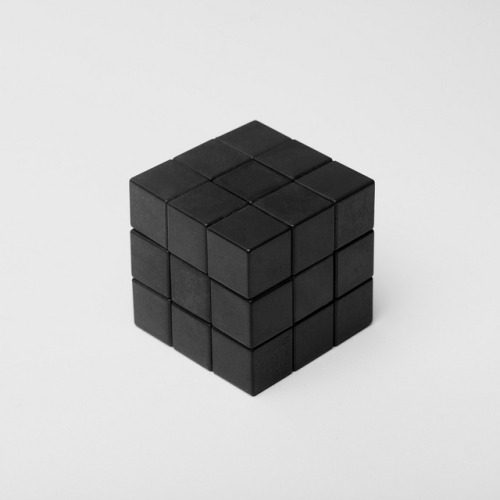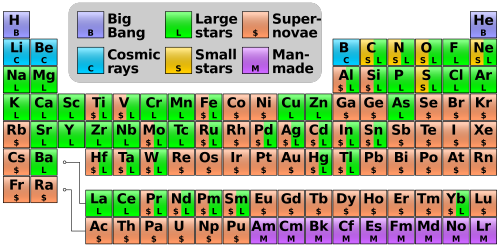Interlocked Coins Form Complex Geometric Sculptures










Interlocked Coins Form Complex Geometric Sculptures
More Posts from Hannahhaifisch and Others


Hubble Image Captures Collision of Two Spiral Galaxies
http://www.sci-news.com/astronomy/hubble-collision-two-spiral-galaxies-04839.html


Agate
Locality: Rio Grande do Sul, Brazil



I’m standing at the base of a Martian dune… Parts of it are two stories tall.








Where Does The Mass Of A Proton Come From?
“It is very accurately known how large the average gluon density is inside a proton. What is not known is exactly where the gluons are located inside the proton. We model the gluons as located around the three valance quarks. Then we control the amount of fluctuations represented in the model by setting how large the gluon clouds are, and how far apart they are from each other.”
If you divide the matter we know into progressively smaller and smaller components, you’d find that atomic nuclei, made of protons and neutrons, compose the overwhelming majority of the mass we understand. But if you look inside each nucleon, you find that its constituents – quarks and gluons – account for less than 0.2% of their total mass. The remaining 99.8% must come from the unique binding energy due to the strong force. To understand how that mass comes about, we need to better understand not only the average distribution of sea quarks and gluons within the proton and heavy ions, but to reveal the fluctuations in the fields and particle locations within. The key to that is deep inelastic scattering, and we’re well on our way to uncovering the cosmic truths behind the origin of matter’s mass.



In slow motion, vortex rings can be truly stunning. This video shows two bubble rings underwater as they interact with one another. Upon approach, the two low-pressure vortex cores link up in what’s known as vortex reconnection. Note how the vortex rings split and reconnect in two places – not one. According to Helmholtz’s second theorem a vortex cannot end in a fluid–it must form a closed path (or end at a boundary); that’s why both sides come apart and together this way. After reconnection, waves ripple back and forth along the distorted vortex ring; these are known as Kelvin waves. Some of those perturbations bring two sides of the enlarged vortex ring too close to one another, causing a second vortex reconnection, which pinches off a smaller vortex ring. (Image source: A. Lawrence; submitted by Kam-Yung Soh)
Note: As with many viral images, locating a true source for this video is difficult. So far the closest to an original source I’ve found is the Instagram post linked above. If you know the original source, please let me know so that I can update the credit accordingly. Thanks!

Where Your Elements Came From
The hydrogen in your body, present in every molecule of water, came from the Big Bang. There are no other appreciable sources of hydrogen in the universe. The carbon in your body was made by nuclear fusion in the interior of stars, as was the oxygen. Much of the iron in your body was made during supernovas of stars that occurred long ago and far away. The gold in your jewelry was likely made from neutron stars during collisions that may have been visible as short-duration gamma-ray bursts. Elements like phosphorus and copper are present in our bodies in only small amounts but are essential to the functioning of all known life. The featured periodic table is color coded to indicate humanity’s best guess as to the nuclear origin of all known elements. The sites of nuclear creation of some elements, such as copper, are not really well known and are continuing topics of observational and computational research.
Image Credit: Cmglee (Own work) CC BY-SA 3.0 or GFDL, via Wikimedia Commons
-
 halusifreak reblogged this · 1 month ago
halusifreak reblogged this · 1 month ago -
 sneakytris liked this · 1 month ago
sneakytris liked this · 1 month ago -
 lunette3002 reblogged this · 1 month ago
lunette3002 reblogged this · 1 month ago -
 lunette3002 liked this · 1 month ago
lunette3002 liked this · 1 month ago -
 kaiuerendriel reblogged this · 1 month ago
kaiuerendriel reblogged this · 1 month ago -
 starlight299 reblogged this · 1 month ago
starlight299 reblogged this · 1 month ago -
 kechara-moon reblogged this · 1 month ago
kechara-moon reblogged this · 1 month ago -
 mybookof-you liked this · 2 months ago
mybookof-you liked this · 2 months ago -
 catadromously liked this · 3 months ago
catadromously liked this · 3 months ago -
 manyfavorites liked this · 4 months ago
manyfavorites liked this · 4 months ago -
 somadyoucouldbite reblogged this · 5 months ago
somadyoucouldbite reblogged this · 5 months ago -
 septic-dr-schneep liked this · 5 months ago
septic-dr-schneep liked this · 5 months ago -
 shealwaysreads liked this · 7 months ago
shealwaysreads liked this · 7 months ago -
 moonchild-77777 liked this · 7 months ago
moonchild-77777 liked this · 7 months ago -
 thelovelygods reblogged this · 7 months ago
thelovelygods reblogged this · 7 months ago -
 virtue-boy liked this · 7 months ago
virtue-boy liked this · 7 months ago -
 kxngshxt reblogged this · 7 months ago
kxngshxt reblogged this · 7 months ago -
 demarcus74 liked this · 8 months ago
demarcus74 liked this · 8 months ago -
 sydneyarlana reblogged this · 8 months ago
sydneyarlana reblogged this · 8 months ago -
 lesbiannemesis reblogged this · 8 months ago
lesbiannemesis reblogged this · 8 months ago -
 lesbiannemesis liked this · 8 months ago
lesbiannemesis liked this · 8 months ago -
 mrclay001 liked this · 8 months ago
mrclay001 liked this · 8 months ago -
 virtuheaux reblogged this · 8 months ago
virtuheaux reblogged this · 8 months ago -
 cozycelestials liked this · 8 months ago
cozycelestials liked this · 8 months ago -
 dopecaliqueen reblogged this · 8 months ago
dopecaliqueen reblogged this · 8 months ago -
 bottledlyghtning reblogged this · 8 months ago
bottledlyghtning reblogged this · 8 months ago -
 jam1784 liked this · 8 months ago
jam1784 liked this · 8 months ago -
 biglez93 reblogged this · 8 months ago
biglez93 reblogged this · 8 months ago -
 biglez93 liked this · 8 months ago
biglez93 liked this · 8 months ago -
 hurtinggoddess326 liked this · 8 months ago
hurtinggoddess326 liked this · 8 months ago -
 nosweetthings reblogged this · 8 months ago
nosweetthings reblogged this · 8 months ago -
 mov33 liked this · 8 months ago
mov33 liked this · 8 months ago -
 jackassaj reblogged this · 8 months ago
jackassaj reblogged this · 8 months ago -
 sublimevibrations liked this · 8 months ago
sublimevibrations liked this · 8 months ago -
 sinceyouasked81 reblogged this · 8 months ago
sinceyouasked81 reblogged this · 8 months ago -
 sinceyouasked81 liked this · 8 months ago
sinceyouasked81 liked this · 8 months ago -
 misaga liked this · 8 months ago
misaga liked this · 8 months ago -
 coolassmb liked this · 8 months ago
coolassmb liked this · 8 months ago -
 slumsaintt reblogged this · 8 months ago
slumsaintt reblogged this · 8 months ago -
 shetillstheearth reblogged this · 8 months ago
shetillstheearth reblogged this · 8 months ago -
 fundedbydarpa liked this · 8 months ago
fundedbydarpa liked this · 8 months ago -
 speedlimit15 liked this · 8 months ago
speedlimit15 liked this · 8 months ago -
 unknowledge reblogged this · 8 months ago
unknowledge reblogged this · 8 months ago -
 unknowledge liked this · 8 months ago
unknowledge liked this · 8 months ago -
 antikythera-wreck reblogged this · 8 months ago
antikythera-wreck reblogged this · 8 months ago -
 mantecol reblogged this · 8 months ago
mantecol reblogged this · 8 months ago